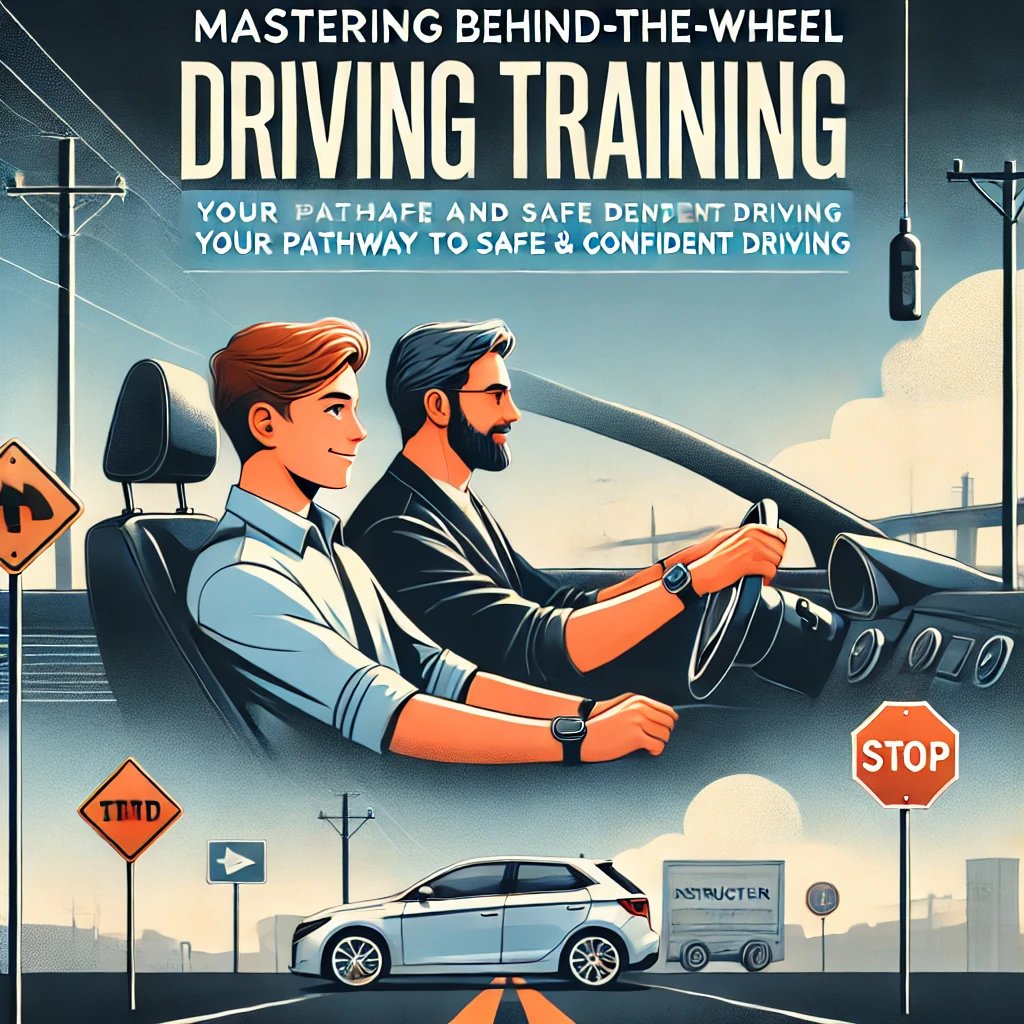Introduction to Behind-the-Wheel Training
Behind-the-Wheel training serves as a critical component of driver education, providing new drivers with the practical skills necessary to navigate the roads safely. Unlike classroom-based learning or simulations, this hands-on training offers real-world experience under the guidance of professional instructors, allowing students to apply theoretical knowledge directly on the road.
The Benefits of Practical Driving Experience
Enhanced Safety and Accident Prevention
Real-world driving experience is invaluable in teaching novice drivers how to anticipate and react to various road conditions and traffic scenarios. Through continuous practice and instructor feedback, drivers learn defensive driving techniques, improving their ability to prevent accidents and handle emergency situations effectively
Building Driver Confidence
Confidence behind the wheel is essential for safe driving. Behind-the-Wheel training helps new drivers build this confidence by progressively introducing them to more complex driving tasks as their skills improve. Starting in controlled, low-traffic environments, instructors gradually expose students to busier areas, ensuring they gain the necessary experience in a step-by-step manner
Legal Compliance and Reduced Liability
For commercial drivers, comprehensive training can mitigate liability risks and ensure compliance with transportation regulations. Well-trained drivers are less likely to be involved in accidents, reducing potential legal costs and enhancing overall fleet safety
Key Components of Effective Behind-the-Wheel Training
Personalized Instruction
One of the most significant advantages of Behind-the-Wheel training is the tailored instruction provided by certified driving instructors. This personalized approach ensures that each student’s unique needs and weaknesses are addressed, promoting a higher standard of driving proficiency
Integration of Modern Technology
Many driving schools now incorporate advanced technologies such as driving simulators and virtual reality into their training programs. These tools simulate a variety of driving conditions and scenarios, offering a risk-free environment for students to practice and hone their skills before hitting the road
Continuous Learning and Skill Reinforcement
Behind-the-Wheel training doesn’t end with the basics. As drivers progress, they are introduced to more advanced techniques and scenarios, including highway driving, night driving, and adverse weather conditions. This continuous learning process is crucial for developing well-rounded, competent drivers
Behind-the-Wheel (BTW) training is a pivotal component of learning to drive, combining theoretical knowledge with hands-on, practical experience to form a comprehensive driver education. This article explores the importance, structure, and benefits of BTW training, ensuring new drivers are well-prepared for the challenges and responsibilities of the road.
Comprehensive Behind-the-Wheel Training: A Path to Safe Driving
The Importance of Practical Experience
The effectiveness of BTW training lies in its ability to expose learners to real-world driving conditions, far surpassing the benefits offered by simulators or theoretical classes alone. By driving under various traffic conditions and practicing responsive maneuvers, students not only learn how to operate a vehicle but also how to react to dynamic road situations, thus significantly reducing the likelihood of accidents
Core Elements of BTW Training Programs
Structured Curriculum
BTW training typically starts with mastering vehicle controls and basic driving techniques in a controlled environment. As confidence builds, the training progresses to more complex skills such as highway driving, parallel parking, and navigating in adverse weather conditions. This structured approach ensures that by the end of the program, students are not only familiar with driving basics but are also competent in advanced driving techniques
Personalized Instruction
A key advantage of BTW training is the personalized feedback provided by certified instructors. This individualized approach allows instructors to focus on specific areas of improvement for each student, whether it’s overcoming hesitations in heavy traffic or perfecting parking maneuvers. Instructors tailor lessons to meet individual needs, thereby enhancing the learning experience and ensuring that each student reaches a high level of proficiency
Defensive Driving and Risk Management
Defensive driving is integral to BTW training, equipping drivers with the skills to anticipate potential hazards and adjust their driving accordingly. This not only helps in avoiding accidents but also instills a proactive approach to road safety. Advanced courses often include high-speed driving techniques, precision driving, and emergency responses, which are crucial for handling unexpected road situations
Technology Integration in Driver Training
Modern driver training increasingly incorporates technology, such as driving simulators and virtual reality (VR), to enhance the learning process. These tools simulate diverse driving scenarios, allowing students to experience and respond to a range of challenges in a safe, controlled setting. This preparation is vital for building confidence and ensuring that students are well-prepared for the unpredictable nature of driving
The Outcome: Confident, Skilled Drivers
Ultimately, the goal of BTW training is to produce confident and skilled drivers. The training not only focuses on the technical aspects of driving but also on building the mental resilience required to handle the stresses of road travel. Graduates from BTW programs are noted for their competence and confidence, attributes that contribute significantly to their safety and that of other road users
Conclusion
Behind-the-Wheel training is essential for anyone looking to become a competent driver. Its structured, personalized approach, combined with the integration of modern technology and defensive driving principles, provides a solid foundation for safe and responsible driving. As driving involves continuous learning, BTW training prepares drivers to adapt and respond effectively to the ever-changing road conditions, making it an indispensable part of driver education.
For those embarking on their driving journey, remember that the skills learned during BTW training will serve as the bedrock for a lifetime of safe driving. Embrace the experience, listen to your instructors, and practice diligently to become a confident, responsible driver ready to take on the road’s challenges.







